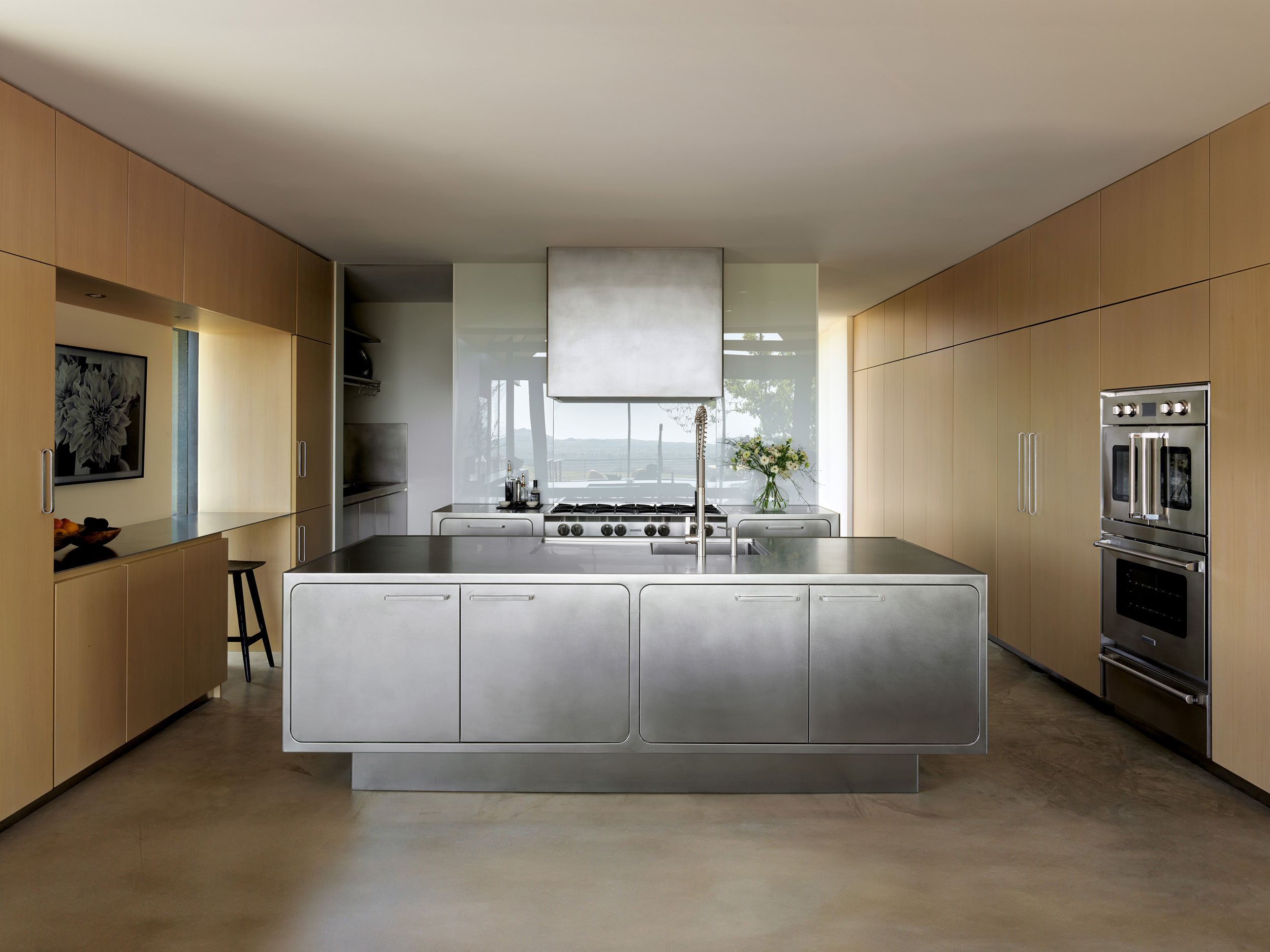
The kitchen continues to evolve…
Once upon a time Italian people ate in a small area called ‘tinello’, which was separate from the actual kitchen. It was also separate from the dining room and from the formal lounge, which was reserved for welcoming guests. There were four different spaces with four distinct functions. Then things changed… In fact, in recent decades, the interior design of contemporary homes has seen kitchens move towards the dining area and the living area, merging into a single open-plan room. A sort of ‘domestic pangaea’.
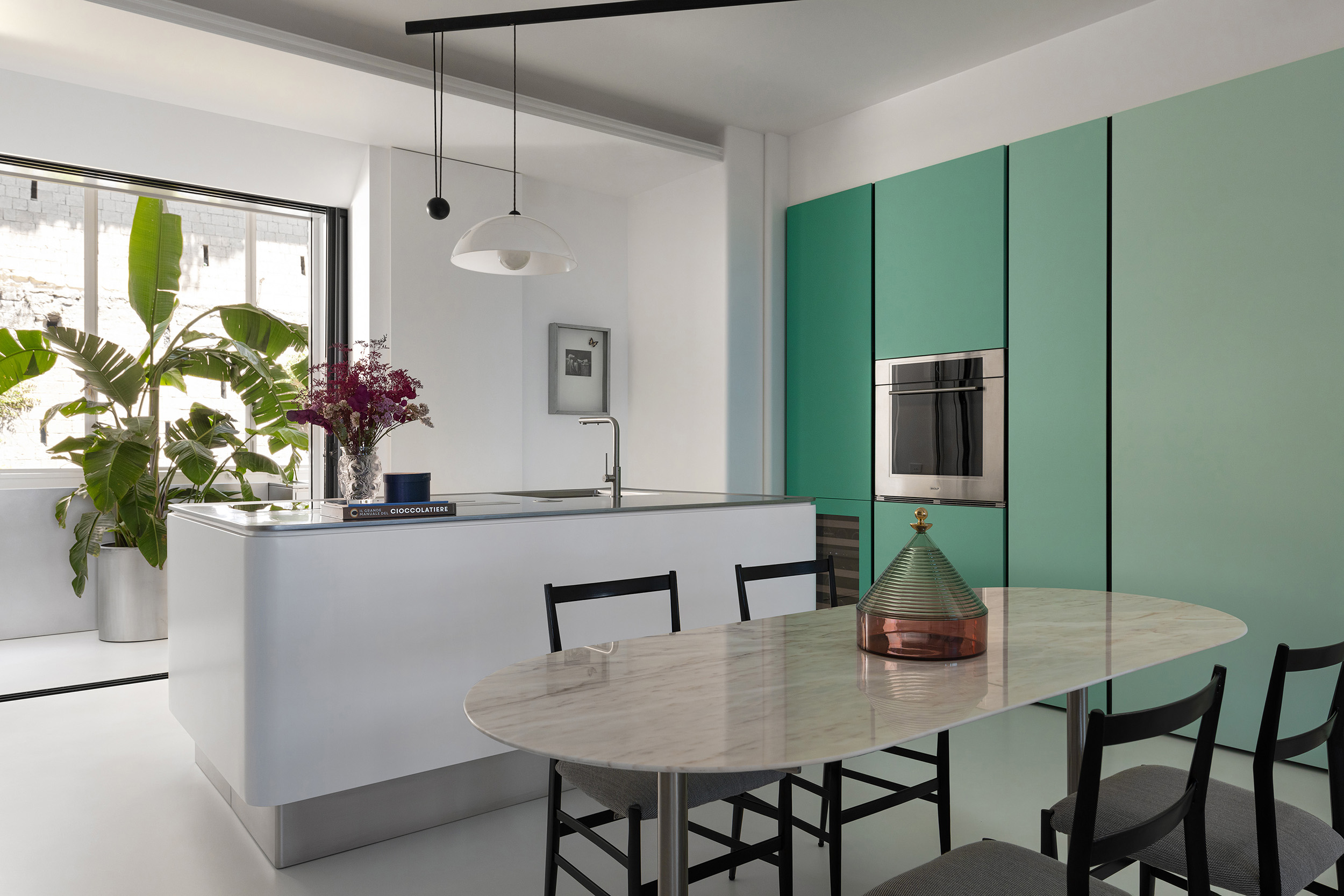
But far from the idea of stopping, this drift of the continents within the house continues its movement, involving and modifying even the very idea of the kitchen.
So, today, we are seeing a trend that calls into question the concept of open kitchens and open spaces as we understood them before. Actually, the kitchen area is now tending to disappear again or at least to step aside… and the so-called ‘invisible kitchen’ is born; a hidden, more introverted and discreet kitchen.

The kitchen is losing its most characteristic and traditional aspects, abandoning every visual trick to wear increasingly minimalist clothes. Looking for solutions that meet the need to harmonize aesthetics and functionality more closely.
“I used to really love open kitchens, but lately I prefer them not to be the main feature of the house. I like seeing them but I don’t like hearing the annoying noises that come from moving plates and cutlery. So, a partition is essential for me. Giuliano Andrea dell’Uva
Read the full interview with the architect Giuliano Andrea dell’Uva
Increasingly minimalist kitchens
One of the hallmarks of invisible kitchens is their transformation into simplified, smooth and streamlined volumes.
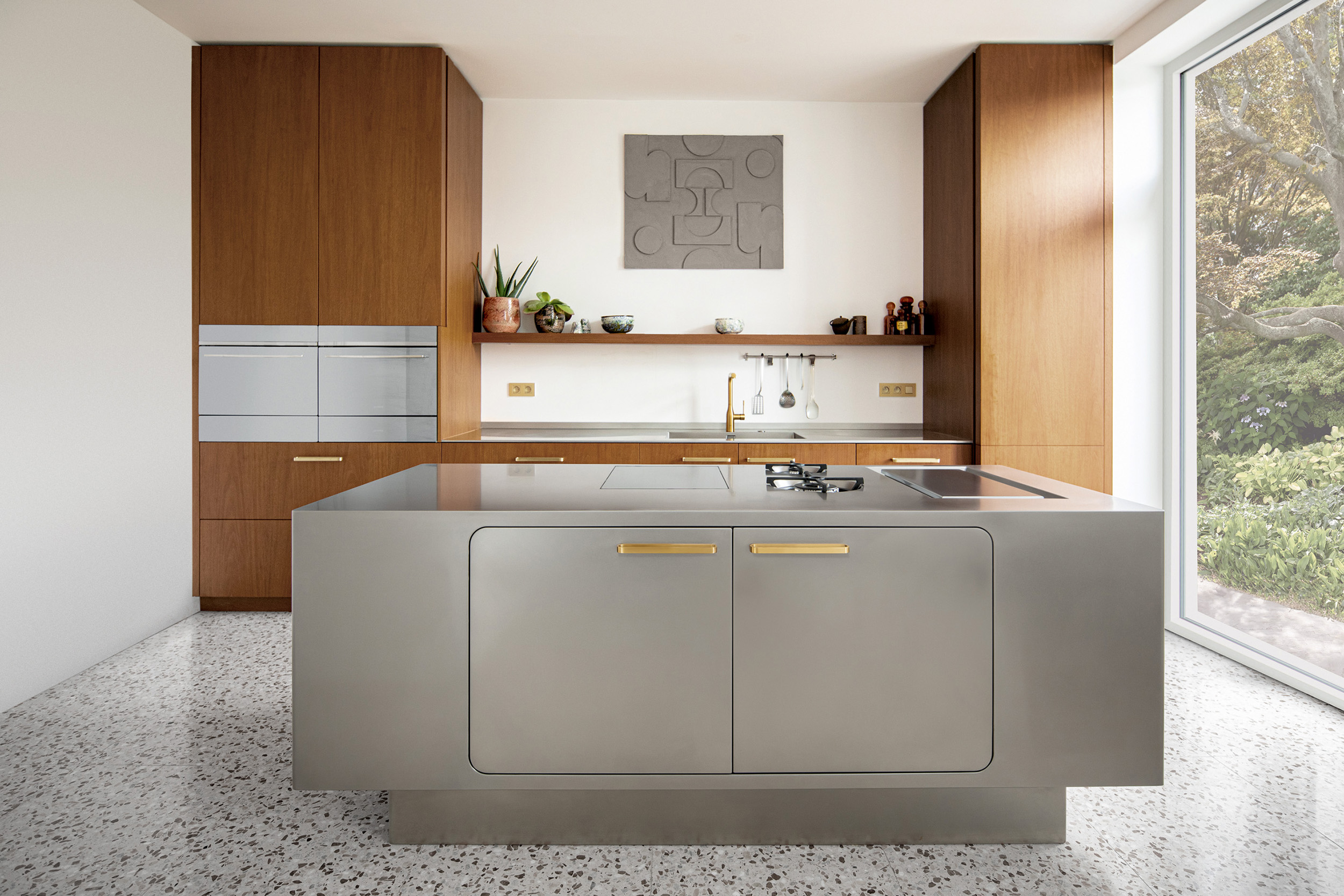
Today’s kitchens are no longer conceived as a collection of separate elements, but as unique, compact blocks discreetly integrated into the surrounding space. Pure geometric lines, square or gently rounded, characterize the kitchen furniture, made with high quality materials such as woods in different finishes, marble or steel, which give the design solidity and high aesthetic value. In this context, every visible element is removed, giving the kitchen a clean appearance without any visual distractions.
The hidden operating area
Another feature of invisible kitchens is the possibility to completely conceal the operating area, in particular sinks, hobs and worktops, behind retractable sliding doors or shutters.
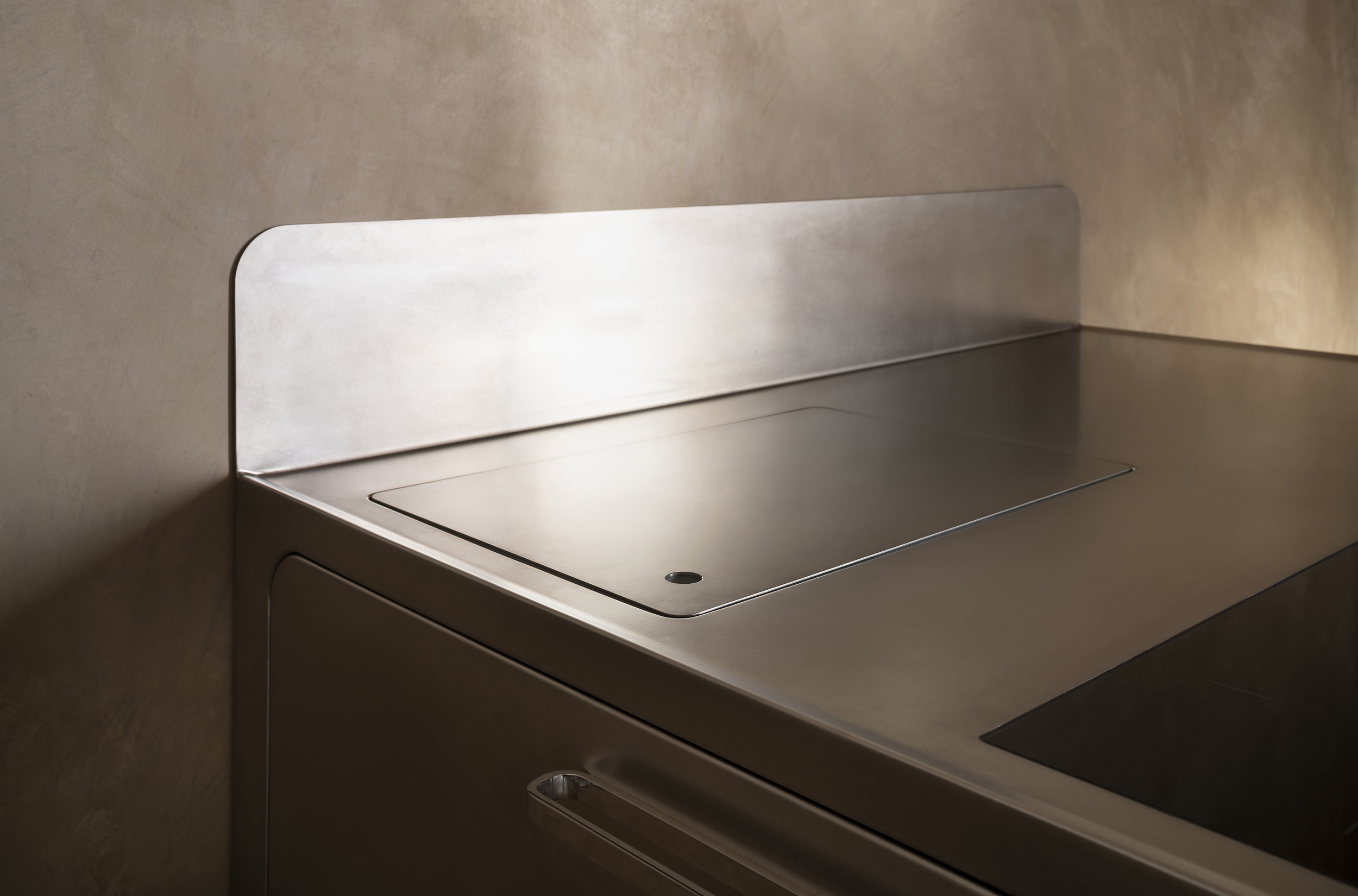
After use, the work area disappears completely, leaving only the essence of the kitchen visible. This solution is particularly popular in homes with open spaces, where the functions of the kitchen must remain discreet without interrupting the visual continuity with the rest of the room. The ‘disappearing’ kitchen also helps to keep the working area clean and tidy, giving the room a sense of aesthetic harmony.
Wood panelling and filtering dividers between the kitchen and living room
Wood panelling, a decorative and functional element, is also taking on a central role in the kitchen. And particularly in ‘invisible kitchens’. It can create flexible, semi-transparent partition walls – open or with storage space on both sides – which can be opened or closed completely when required by means of sliding partitions or built-in concealed doors.

In short, the panelling makes it possible to keep the kitchen area separate from the living area discreetly, without clearly separating the spaces unless necessary. On the other hand, as the panelling is almost always made with the same finishes as the kitchen – traditionally various finished wood essences, but increasingly also exposed or lacquered stainless steel – the kitchen remains an integral part of the living area, but is almost invisible.
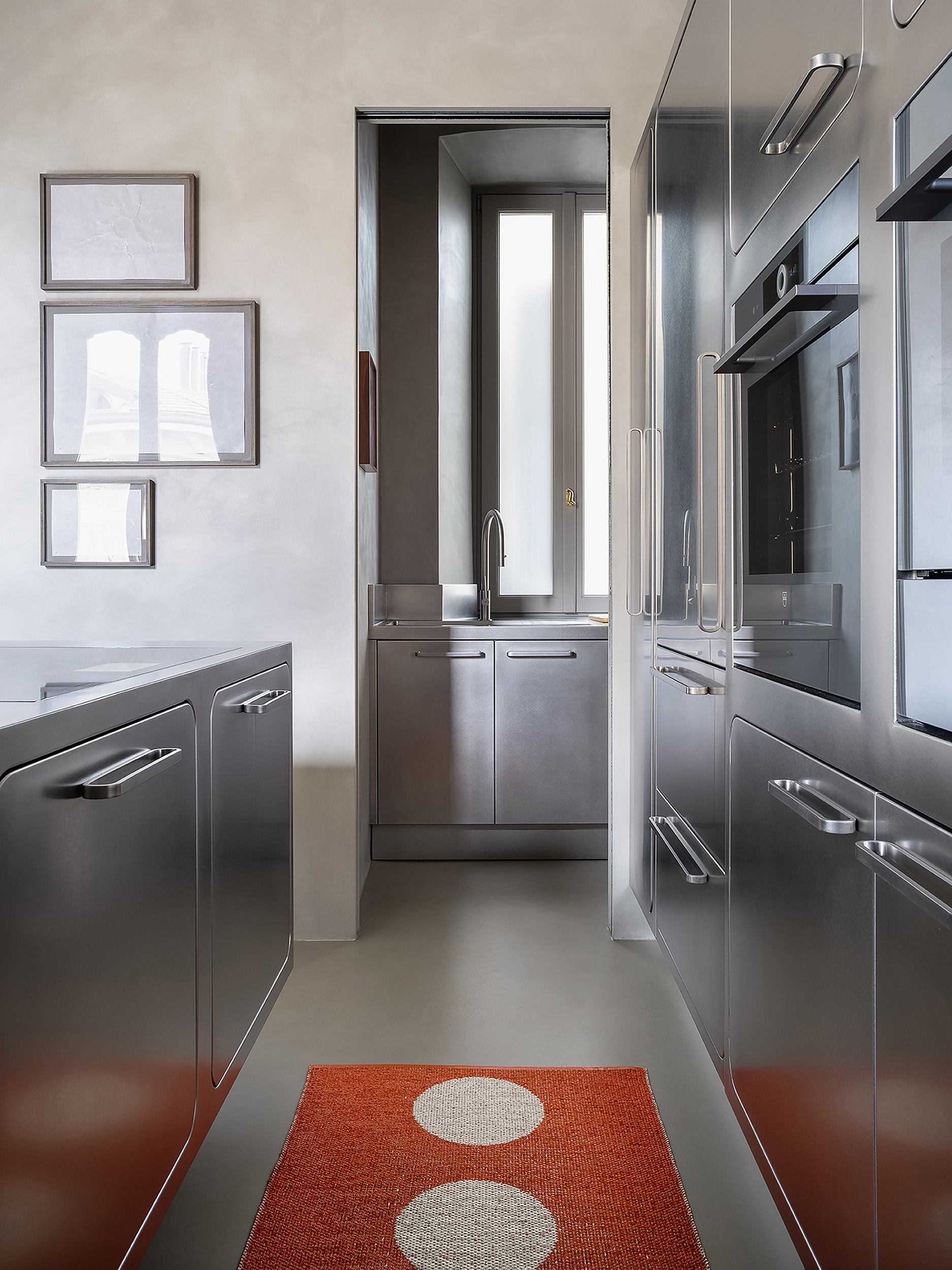
Last but not least, the retractable doors integrated into the panelling can also conceal utility compartments such as storage areas, cupboards, laundries or washing areas, making the room more functional without sacrificing its style and elegance.
Islands as monolithic sculptures
In many modern kitchens, the island is the most important element, not only from a functional point of view, but also and above all from an aesthetic point of view. However, the kitchen island tends to be transformed into a monolithic block, very similar to a contemporary sculpture. Made of materials such as marble, stone or steel, today’s kitchen islands have smooth and minimal surfaces, with a flush hob (and often an extractor fan integrated into the worktop) so as not to interrupt the linearity of the surfaces.

These elements, devoid of decorative details, appear to be “silent” but, if necessary, reveal all their functionality showing how beauty and practicality can coexist in harmony.

Integrated and concealed appliances
The complete integration of household appliances is another peculiarity of concealed kitchens. Every appliance – from the refrigerator to the oven, from the dishwasher to the microwave – disappears behind doors to blend in with the rest of the kitchen, ensuring a clean and uniform look. Modern technologies have also made these appliances increasingly performing, silent and discreet, so as not to interfere with the atmosphere of the living room, making the kitchen part of the setting, but never disturbing or interfering with it.
Groove openings for a cleaner design
The absence of handles can be another distinctive trait of what we call invisible kitchens. In order to maintain the linearity of the surfaces, some kitchens use groove opening systems, which allow drawers and doors to be opened without the use of visible handles.
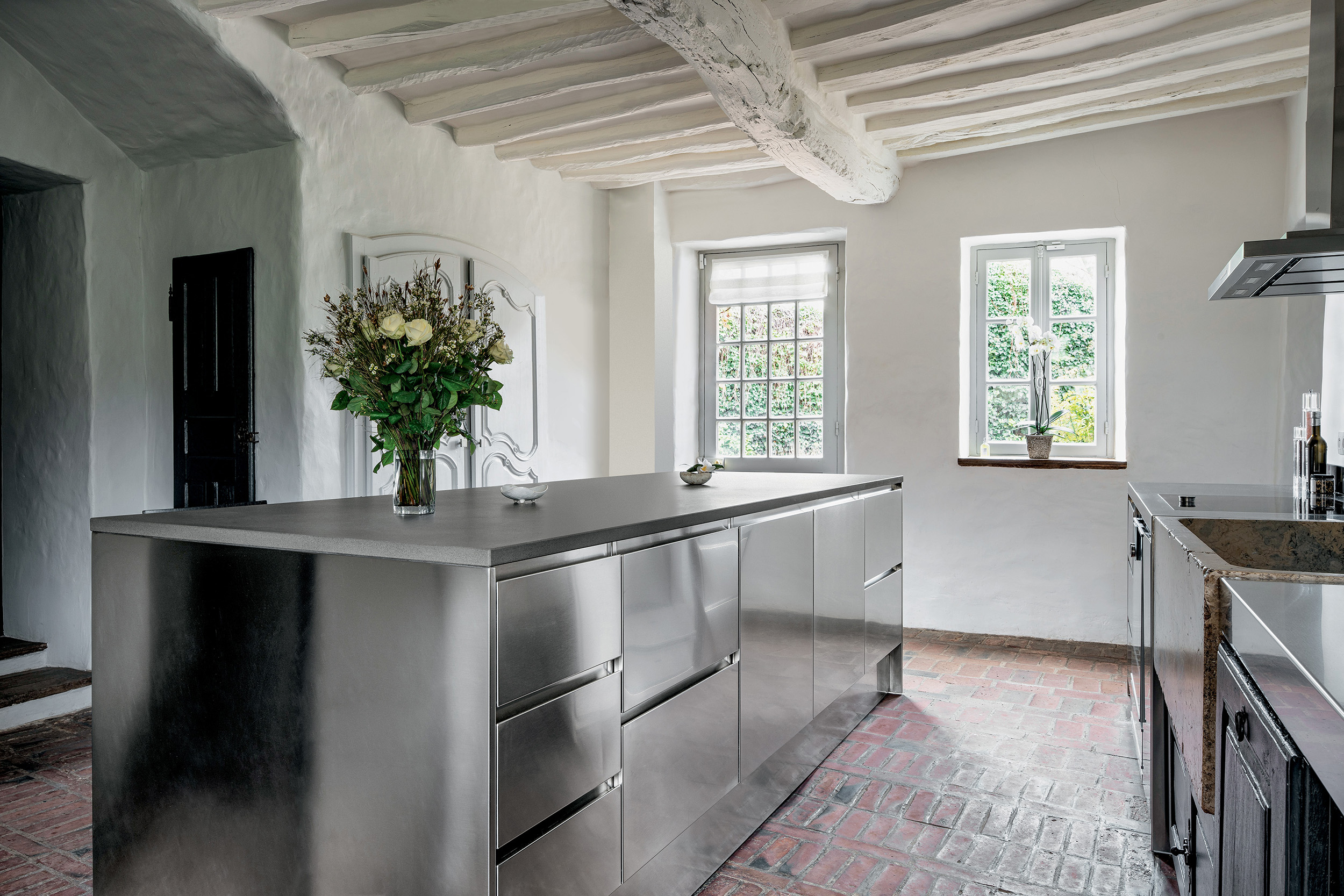
This detail allows the design to be expressed more minimally. In fact, the groove creates strong horizontal cuts and strong graphic marks that break up the lines, enhancing them.
The double kitchen: scenic beauty and hidden functionality
In larger homes, the invisible kitchen trend has led to the creation of two separate areas: a more scenic area and a functional one.
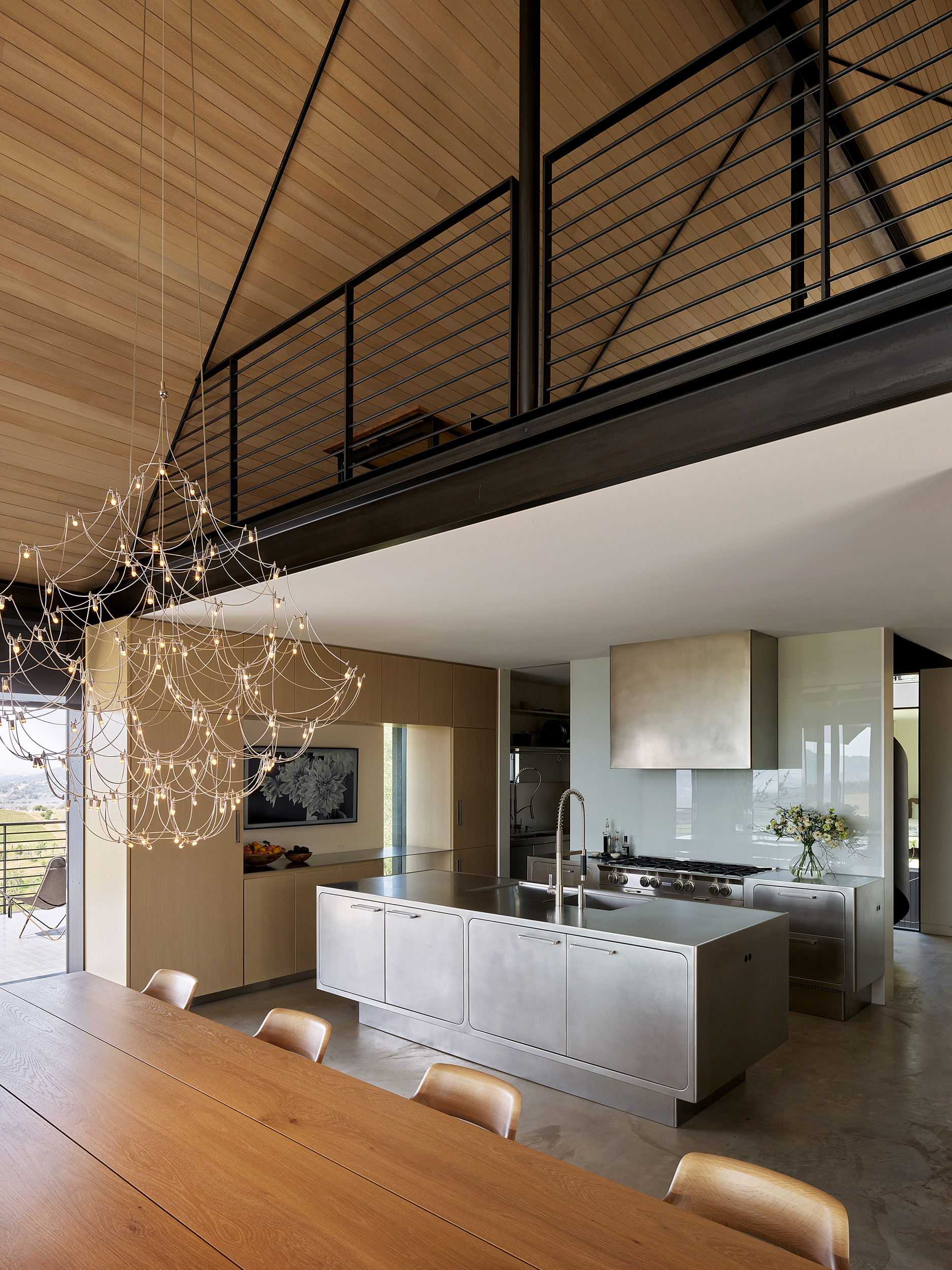
The main kitchen, integrated with the living room, is very well designed and made to be admired. In addition to this, often hidden behind a wall or placed in a separate room, there is a second kitchen, which is more functional and operational, where all the practical operations – storage, preparation, cooking and washing – take place without affecting the beauty of the main room.
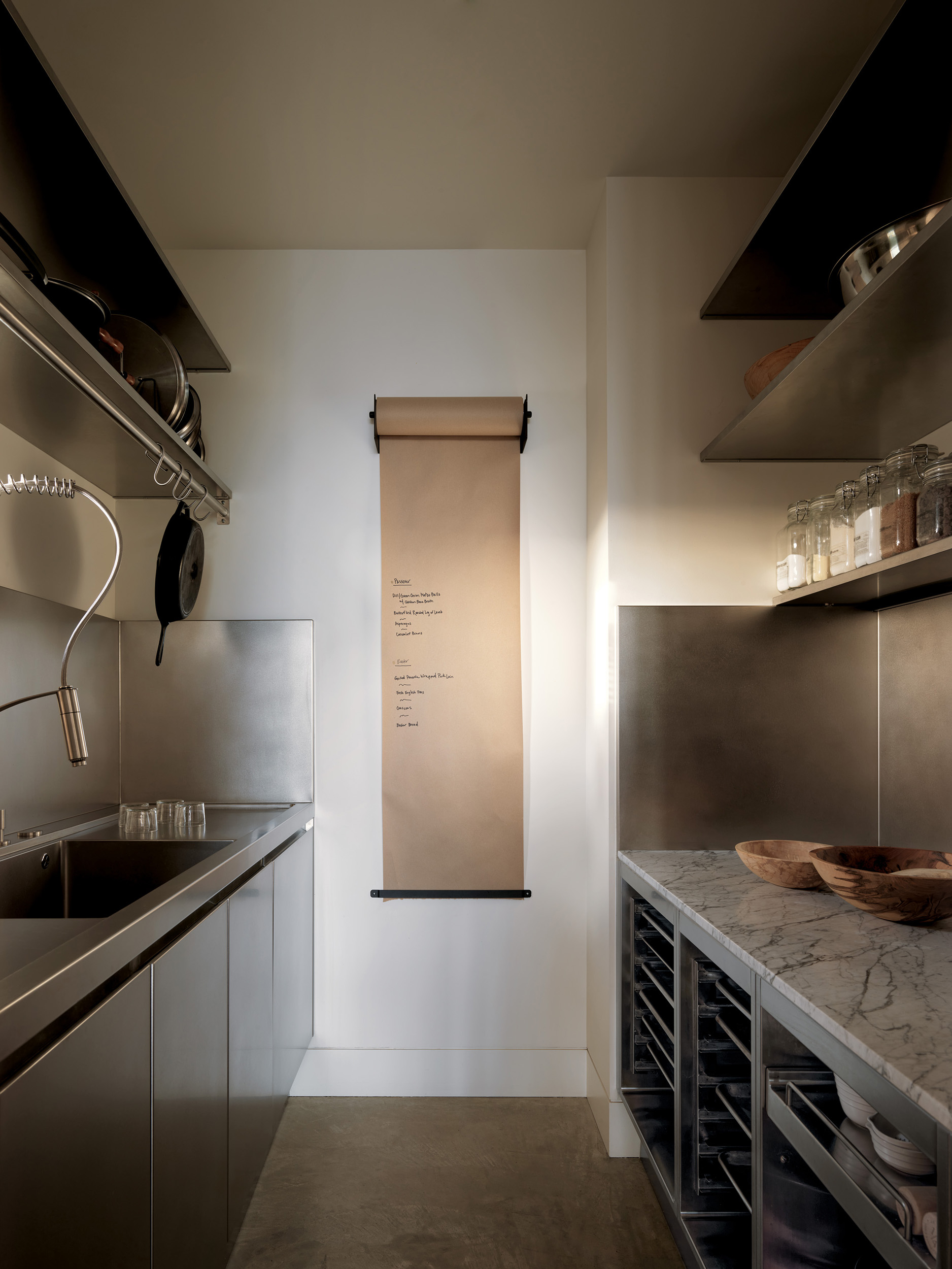
This solution offers a perfect balance between aesthetics and practicality.
In this domestic universe, increasingly oriented towards the organic fusion of spaces, the ‘disappearing kitchen’ is a trend that responds to the desire to maximize the beauty of the environment without sacrificing functionality. It is increasingly hidden, but never penalized. So, the kitchen design fits perfectly into the design of the living room. And it goes back to being the main feature of the home but without taking over.

